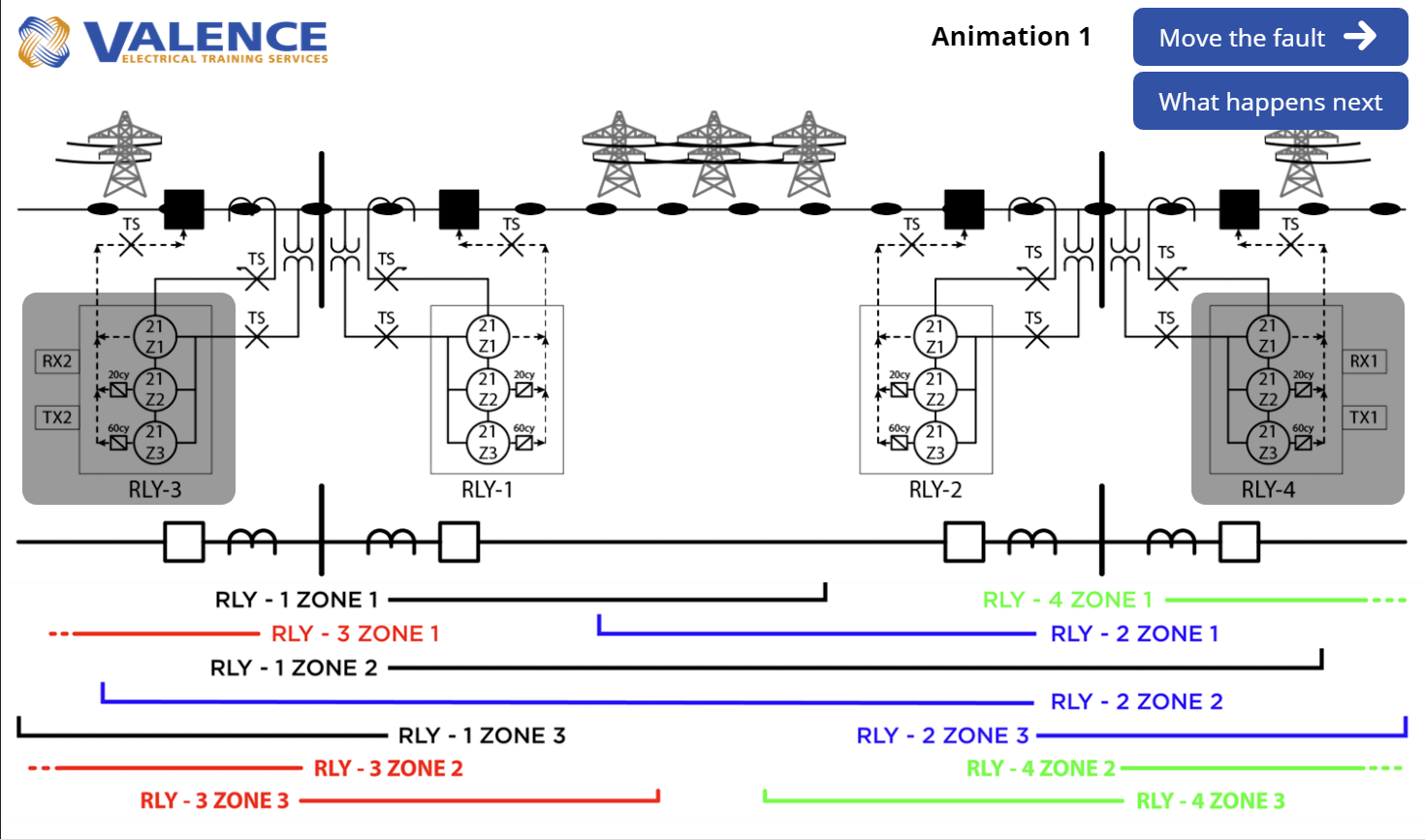No products in the cart.
Can You Predict What Happens Inside a Distance Protection Relay?
Distance Protection (21) has many names (Line Protection, Line Distance Protection, Impedance Protection) and is one of the more complicated elements used in protective relaying. The Relay Testing Handbook series explains Line Distance Protection.
This bonus animation was created to help relay testers understand distance relay principles.
See if you can accurately predict what will happen at different fault locations.
Click on the following image to open an animation to see if you can accurately predict what will happen at different fault locations with a Permissive Over-Reaching Transfer Trip (POTT) Scheme.
Press “What happens Next” to move through the animation. Press “Move the Fault” to change the fault location.

You can watch this animation in action here:
You can download a cheat sheet you can refer to later when trying to work through how a standard line distance protection scheme operates:
Did you like this post?
You can share it with these links:
Read More Articles:
Can You Predict What Happens in a Direct Under-Reaching Transfer Trip (DUTT) Scheme?

Can You Predict What Happens Inside a Distance Protection Relay graphic……is so cool! You are revolutionizing P&C training….Chris “Blackburn” Werstiuk
Thanks for the kind words John
Very cool, Chris. We don’t use Distance Relays much in our (small) system. Only have Distribution (<60kV). Your pedagogical (did I spell that right?) techniques really help me quite a bit.
Many thx!!